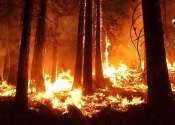Low-intensity grassland is better able to withstand the consequences of climate change
Climate change will have a considerable influence on the biodiversity and productivity of meadows and pastures. However, according to the results of the large-scale climate and land use experiment, the extent of these changes ...









